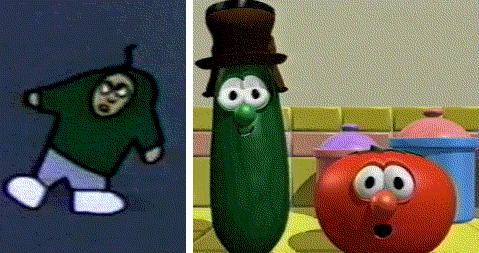Staging and composition play a huge part in the animation process, brought into development during the early stages during storyboard, through to layout, animation and tweaked again during the final edit. Staging can make all the difference in the meaning and effectiveness of a shot, helping it to communicate the desired emotion or reaction.
Here I am starting initial research by looking generally at how staging has been used in animated films and series, briefly looking at the basics of staging and how they are applied.
Hanna Barbera
Staging plays a very
important part in a lot of Hanna Barbera cartoons because, due to the highly stylised aesthetic and limited animation technique, the composition of the frame is vital in helping to quickly and effectively communicate the intentions of the scene.
Here you can see how the shots are staged for maximum effect. As
Huckleberry Hound enters the frame, the camera cuts in close to allow for
a more intimate audience interaction, and creates a tight angle, setting
it up for the payoff, as Huckleberry falls down the crater, maximising
the comic effect.
Disney
In contrast to the simple and deliberate staging of the Hanna Barbera cartoons, Disney employs a more subtle, and cinematic approach to the staging, as opposed to Hanna Barbera's economic and time-effective compositions and character positioning.
Here you can immediately see the cinematic power of the staging
employed here by the disney layout artists. The sweeping dunes of Aladdin
provide a significant contrast to the relatively tiny characters in the foreground,
helping to create a huge sense of scale and prowess. Had the shot been staged
with the characters much closer in the foreground, the perspective and scale
would have been lost.










